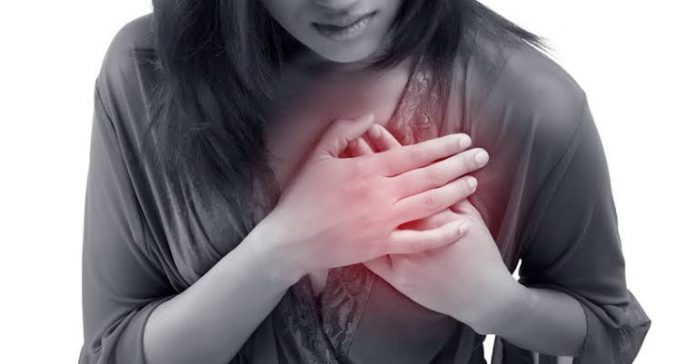Heart attacks can be concerning during the winters. Know why?
Heart attacks are one of the most common causes of mortality these days, with multiple cases being heard amongst those in their 20s, 30s and 40s. While there are many pressing risk factors that increase one’s risk of getting a heart attack, as well as delayed attention to symptoms, seasonal changes, too, can play havoc with your heart. Yes, you read that right!
While winter is often considered a preferred season by many, it is also often the weather when most heart attacks strike. Yes, not just respiratory illnesses and iflux of viruses, heart diseases too, can be a cause of worry during the winters and the sudden drop in temperatures. Thus, while sudden heart attacks and ailments require imperative care, winters are also the time to be more cautioned than ever:

Why do heart attacks become common during winters?
While there’s no one exact cause as to why this happens, a lot of experts feel that one of the reasons there’s a surge in heart attacks is due to our body’s physiology, and how a drop in temperatures impacts the heart. Several studies have suggested that during the winters, there’s also a greater incidental risk of strokes, heart failure, cardiovascular issues, arrhythmias and disorders.
During the winters, the body’s sympathetic nervous system activation increases, which ends up narrowing the blood vessels, also referred to as ‘vasoconstriction’. When this happens, the blood pressure levels increase and the heart works harder in pumping blood to different parts of the body. Further, during the colder months, the temperatures can pose difficulty in maintaining body heat and cause hypothermia, which can cause difficult damage for the heart’s blood vessels.
How do the risks affect heart patients?
During the winters, the winter chills can be pretty hard to deal with. When the temperature drops, the body ends up working doubly hard to regulate heat, and this ends up taking a toll on the heart’s functioning. The risk can be pretty high for someone who’s already a heart patient, or has a history of heart attacks. During the winter season, the body’s oxygen requirements also shoot up. With vasoconstriction already happening, reduced amounts of oxygen reach the heart, which pose imminent risks for a heart attack.
What other factors pose problems?
With the onset of winters, there could be an indirect rise in factors that can contribute to risks of heart attack. Colder temperatures could mean that people find it difficult to get out and be physically active, or may put off exercising, which is bad news for the heart. Food consumption and habits can also change and a higher intake of cholesterol raising foods can also impact heart health gravely, and impact arteries. Not to forget, stress levels and other pre concerns can also add to your overall risks.
Further, with the rising smog and pollution levels, the Particulate Matter (PM) levels in the air can also aggravate inflammation and cause heart trouble. Anecdotal evidence over the years have highlighted that pollution levels have been associated with a whopping 69% increase in cardiovascular deaths, and rise in mortality rates as well. All of these factors, coupled with genetic risks and poor attention to health, can make heart attack risks during the winters a serious concern.
How can you reduce your risk and stay safe?
Heart attacks can be a significant risk and need precarious care at any age. With a higher risk during the winters and pollution levels high already, it’s all the more important to follow the right approach, stay on the right track of health and keep heart diseases at bay. Here are a few expert-approved ways to keep your heart functioning fine:
– Make sure you are dressed appropriately: A change in weather could increase your chances of falling sick quickly. If you are at risk, make sure you dress well and cover yourself in layers suited for the weather. It’s also a good way to tackle the seasonal woes which come up with the pollution levels.
– Stay physically active: If the chilly temperatures are making you afraid to step out, find alternate ways to exercise. Regular physical activity and exercise boost your immunity, help regulate body heat and stay fit. Home workouts, heart-friendly aerobic moves, yoga and meditation also work wonders.

Reduce the risk of comorbidities
To cut down the risk of heart disease and sudden heart attack, it’s also needed that external comorbidities and other risk factors are kept under check, including diabetes, blood pressure levels and other vascular issues. If left unchecked, it can complicate one’s case or make you more susceptible to dangers.
–Keep a check on your eating habits: The winters can increase one’s appetite, and there can also be a tendency to have more fried, sweet foods, some of which can be high on cholesterol, sugars and fats. Track your eating habits, stay within limits and look for healthier alternatives whenever possible. Also limit the consumption of alcohol and tobacco.
Measure your risks and go for preventive screenings
To alleviate the risk of heart risks and prevent sudden heart attacks from getting worse, it’s vital that every individual go for timely preventive screenings, assess familial risks, risk-factors and take action accordingly.
Do not delay getting help: A case of a heart attack requires imminent, emergent care. Identify warning signs and symptoms, seek medical help at the earliest and do not put off any symptoms. Any irritation, heaviness in the chest, sweatiness, shoulder pain, jaw pain, dizziness or nausea should not be taken lightly.













